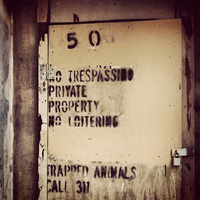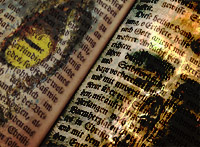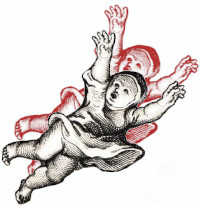From the outset the centurian—who is the toughest son-of-a-bitch in all of warfare—is at a tactical dilemma in a duel. Roman soldiery was designed to take apart a phalanx of spearmen. What they had trouble with was horse armies in open terrain and armies of individual fighting men in broken terrain. The Rajput warrior is actually a better armed version of the Gauls and Germans that gave the Romans such a headache. The Gauls sacked Rome early in the Republican period and the Germans gave the Romans the worst defeat in its early Imperial history in 9 A.D. when three legions under Varus were butchered in the rain, over the course of a days’ long running engagement in the Teutoburg Forest.
The Rajput is an open order skirmisher who would have done well against small heavy Roman units, but would not have been able to operate effectively against a legion on the field or in a siege. The auxiliary cavalry, archers and velites [darters] would have chased these duelists off in maneuver situations until the Romans managed to develop a siege, against which the Rajputs would have been helpless. The scorpion and dolabra were strictly siege weapons and would not be used in the field except by slave pioneers such as at Teutoburg. The dolabra was used every day to dig entrenchments for a temporary fortress after each 18-mile march.
The Roman experts cheated on their weapon selection. The centurion did not man a scorpion, wield or carry a dolabra and certain types of centurians, such as the posterior or first centurian would not throw a pilum. Let us say that the centurian depicted is a prior, the buck sergeant of the legion, with a pilum, rudis [rod], gladius and pugio [dagger]. Unlike the aspis of the spartan, which was a dueling shield adapted to close order maneuver, the scutum is a shit dueling shield, held by the hand, placing much strain on the wrist against heavy cleaving weapons, but ideally suited for close formations. What saved the Roman soldier against the Celt was the poor quality iron of his long slashing swords. The German wooden sword, however could defeat the scutum-gladius combination in an open order fight. Keep in mind that the centurian’s job was primarily to use his rod to keep his men from getting dragged into open order fights.
Weapon Notes
The punching daggers, in armored hands, are nasty, but tactically problematic against any type of sword and shield combo. In such a situation the swordsman wants to pass-slash for the arms of the dagger fighter. Interestingly, the Romans had a specialized type of gladiator, the Scissor, who fought exactly like this with heavily armored arms. Indeed, the Rapjut warrior, with his different weapons, resembles nothing more than a gladiator proficient in numerous ritual weapon sets. The Roman advantage would lay here, that he had seen gladiators fighting in this manner, and that the Rajput would have never faced anything like a Roman.
The Rajput flying disc looked like a bullshit weapon but delivered. Wow, my Frisbee ability as a young man would have paid great dividends on a Sikh battlefield.
I was pleased that the gladius and scutum were competently demonstrated to great effect. Although the gladius has often been described as a stabbing weapon, that was only against the Germans and Celts where that was the primary use. It was an asymmetrical weapon, used to stab against slashers and slash against stabbers. When the Macedonian army fought the Romans at Pydna and were recovering from a draw, in which their formations broke up on hilly terrain, their king called a funerary meeting where troop morale would be restored praying before the bodies of the slain. However, the Macedonian spear and pike men, so used to stabbing men and seeing whole dead, were utterly demoralized by the sight of their comrades missing arms, legs and heads from that brutal; sword. The gladius was called “the Iberian sword” after the tribes of Spanish Celts that invented it as an improvement over the Greek Xiphos [reaper]. The Romans adopted it as their own. This weapon killed tens of millions of humans [5 million in what is modern France alone] over the 700 years it was used as the primary infantry weapon of the Roman Republic and then Empire, making it one of history’s most lethal handheld devices, surpassed only by the composite bow until the advent of breech-loading rifles.
The whip-sword was a bullshit weapon—just charge that guy and stick him.
As for the impressive Rajput straight saber, that is an executioner’s sword. Wielded two-handed the centurian should prevail. However, I would have liked to see the Rajput swordsman use their circular method to work around his round shield with that saber used one handed while circling the centurian. The money shot would be cleaving the centurian in the calf behind the grieves, which is what happens when you wear shin protection when fighting with long slashing swords. I have a bunch of broken veins in my lower right leg to prove it.
Note that mail is really only effective for stopping slashing weapons of mid to light weight.
This was a good episode and shows the series methodology in its best light.
Twerps, Goons and Meatshields: The Basics of Full Contact Stick-Fighting











This episode was my first introduction to the Rajput warrior and culture.
I always knew that Whip-Sword was bullshit.
About the Centurion Weapon Kit: I think they choose the Dalabra, the Scorpio and the Pilum becayse they had to have weapon for all the range categories.
The toughest son of a bitch in all warfare?
We wrecked one of their legions in the Great War and took their eagle, and wrecked three of them in the Bar Kochba war. Along with their auxilia, of course.
That's with lightly armed irregulars.
They had to pull together forces from the whole empire to conquer us.
The good legions were always stationed on the northern frontiers during this period. After Trajan's time and the rise of the Persian menace you see better troops in the east. The whole concept with the Roman empire was that you conquered people might be able to rise up and beat the local garrison, but once the call went out to bring the hard asses back from Dacia and Germania, then you'd be decorating crosses along the road like Spartacus and his men.
The point about the Roman Centurian being such a tough nut was that he was the moral cadre of this 150-300,000 man force that managed to hold down a huge empire despite some real disasters, like what you described. Hell Crassus lost 40,000 guys in Parthia in a day! Spartacus defeated Roman forces in 9 battles. A legion marched into Scotland and was never heard from again—vanished! Realistically, Rome was a terror state. You might be able to kill that tough son of a bitch and his 80 men, or even wipe out a whole legion [which usually amounted to a modern regiment, not a division] but they would be avenged.
The Hebrews deserve credit for breaking some Roman fangs. The fact that your ancestors pissed them off so bad that they scattered them to the four corners of the empire is testament to how tough the campaign was. I actually played the Siege of Jerusalem once by SPI, I think. The designer considered it one of the four great sieges of all time, and taking on the Zealots and building that ramp at Masada is probably in the top 10 of ancient sieges.
Does the IDF use Masada for any ritual purposes?
Also, does the IDF have any ceremony, medal, or monument to the Maccabees? You would have thought the Romans would have learned that you had to squash Isrаel from what happened to Antiochus.